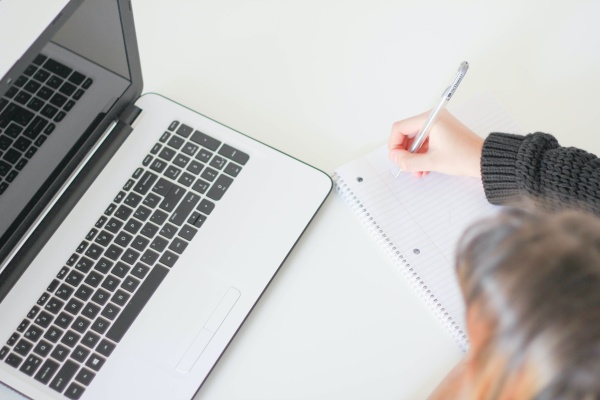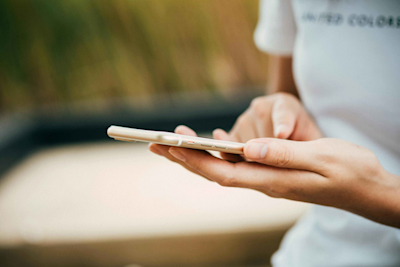
How to avoid work/life blur while working remotely
For happier and more productive days while working remotely, it’s worth putting measures in place to minimize the inevitable work/life blur caused by working from home!
The challenges of working from home
Does it seem that you work extra hours while working remotely? It appears so. According to a survey from NordVPN, individuals working from home are working an additional three hours each day while working from home. There may be many benefits to remote working – but working more certainly isn’t one of them.[1]
This is part of what experts are referring to as the ‘work/life blur’. When you have the means and ability to be at your desk straight after breakfast and take your laptop downstairs with you after dinner, the workday extends from the usual nine-to-five to ‘always connected’ and ‘always on’. This leaves many working professionals feeling as though they are lost in a constant blur of work/home gray area. Although they are never entirely at work, nor fully away from it either –it’s a state that may lead to increased stress and worry.
Clearly there are benefits to insisting on a separation between work and your personal life. According to research at Purdue University in the US, effectively managing work-life boundaries can “reduce role conflict and enhance the wellbeing of employees, teams, and organizations”. It can also reduce stress, prevent burnout, and enhance mental and physical health.[2]
If you’ve come to the conclusion that you need to start separating your work and home life, more effectively, below are some tips to help avoid the dreaded work/life blur.
1. Fake a morning commute
You may have found elements of your pre-Covid commute annoying, but at least it was ‘your’ time. So, while you’ve gained more time by not having to commute every day, chances are you’ve lost that very important “me-time”, too. Make an effort to reclaim this lost “me-time” by giving yourself 15-minutes each morning to step outside your house and, if possible, take a walk around the block prior to sitting down in front of a laptop and starting your workday. The fresh air and a chance to get the blood pumping will set you up for the day. When you return, you’ll be ready to take on the day.
2. Use technology intentionally
Technology is great for coordinating all the various parts of our lives. However, it can work against you when you want to mentally separate your work and home life. If possible, create separate work and personal email accounts, phone numbers – and yes, perhaps even phones – and turn off notifications on your work devices at the end of the workday. Try switching to a minimalist feature phone, such as the Mudita Pure in order to make a conscious effort to be more offline, when you’re not working.
3. Say NO to lunch-time meetings
We know how hard it can be hard to stop for a meal in the middle of the day. Particularly when you have plenty of other responsibilities which demand your time. Start treating your lunchtime like another meeting, the one that starts on time every day and like you can’t get out attending. Pencil it into your calendar and make sure you indicate that you’re not available for calls or emails during this time. Then, step away from your desk to enjoy your break, whether it involves actual food or not-that’s entirely up to you. You’ll find there’s a positive knock-on effect on your afternoon, too. According to a Tork company survey, nearly 90% of North American employees claim that taking lunch breaks helps them feel refreshed and ready to get back to work.[3]
4. Wind down every day
When you work from home it can be quite difficult to ever truly feel ‘finished’ for the day. We don’t have the same routines such as putting on your coat and leaving the office at 5pm every day. To help you get into the right mental headspace, it might be beneficial to develop a wind-down routine at the end of each work day. Decide on a regular time that you will stop working for the day. Check your calendar for any upcoming meetings and create a to-do list of items to tackle when you start work the next day. Then fully shut down your laptop. Don’t just put the lid down! Turn it off all the way and turn off all your other electronic devices. If you have the ability to leave the room you’ve been working in all day until the next day, even better.
5. Make sure to use your vacation days
When you’re working from home, it can be tempting to constantly log-in and check your emails while you’re supposed to be taking days off or on vacation. However, try to make a conscious decision to resist the temptation of checking-in. Research confirms the benefits of taking time off. In fact, it shows that without recovery periods, our ability to continue performing at high levels diminishes significantly. Our minds and bodies need time to recharge by unplugging from work. Just make sure to leave a comprehensive handover list for your colleagues and then unplug. Switch off your work phone and put away your laptop. Make a conscious effort not to answer emails, don’t ‘check-in’ and don’t even think about sitting down at your work space. However, if the thought of taking a long vacation from work fills you with anxiety, consider taking a couple of days off and see how you feel. An afternoon off every week or a full day here and there might be just the thing to recharge your batteries.
If you enjoyed this article, please check out similar ones featured on our blog and learn more about how to increase your concentration and be more productive.
Discover how intentionally unplugging can help you achieve better work/life balance
To learn more about Mudita, take a look at our website and our other posts. If you enjoyed reading this article, please share and recommend it!
Related stories

The Case for a Minimalist Phone in a Smartphone World
Mudita Kompakt is a minimalist phone designed for balance, focus, and mindful tech use. Break free from digital overload and embrace intentional living.

Stop Mindless Scrolling: Break the Habit & Reclaim Your Time
Mindless scrolling harms productivity & mental health. Reclaim time by setting limits through mindful tech use & tools like Mudita Kompakt for intentional use.

Why do Navy SEALs use box breathing?
Box breathing is a technique used by Navy SEALs, athletes, and others in high-stress situations to help manage stress and maintain focus.
If you'd like to receive the best stories from our blog, keep up to date with our progress and get notified about our product releases and special discounts.